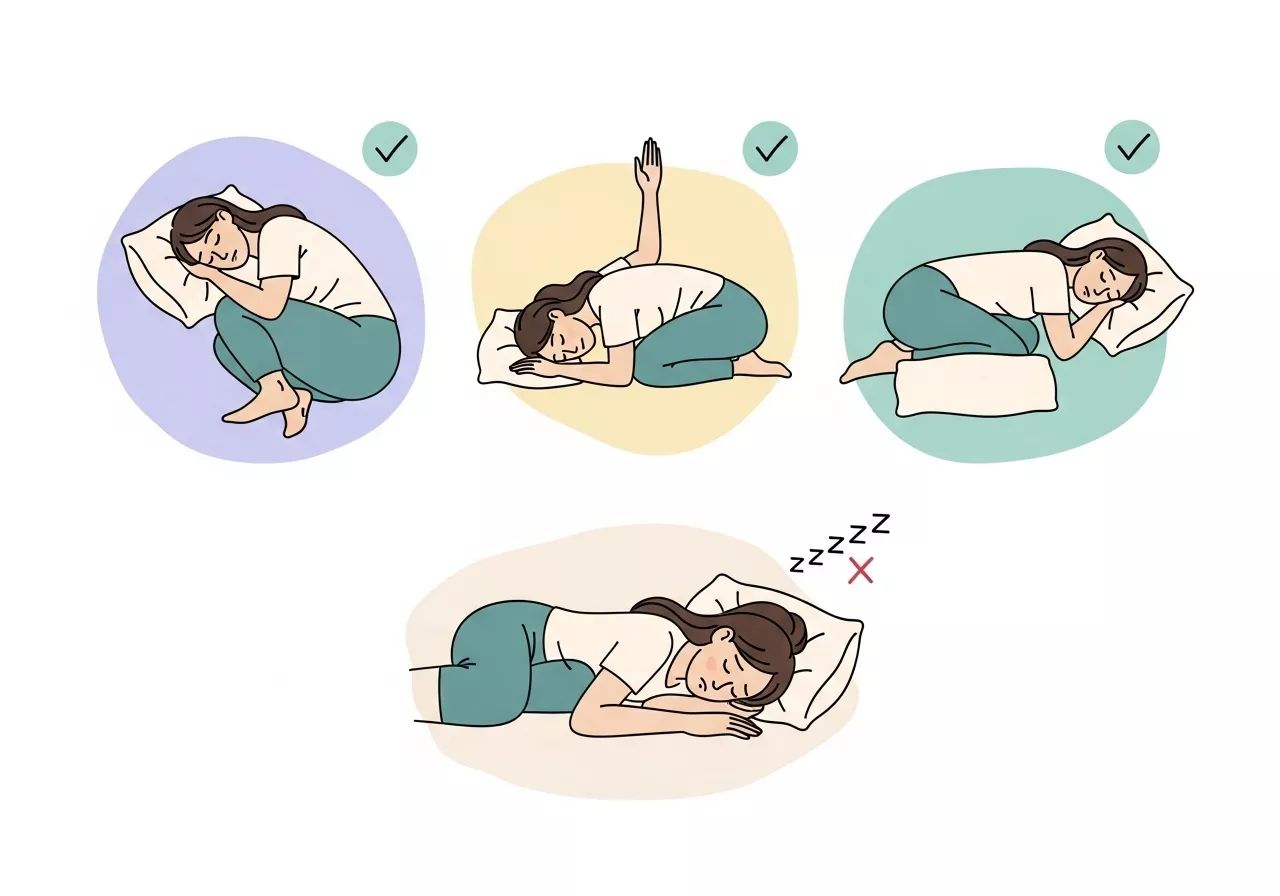Yoga is a versatile practice that can be adapted to suit individuals of all body types, including those with larger bodies.
By incorporating specific poses and utilizing props, yoga can enhance flexibility, strength, and overall well-being.

Benefits of Modifying Yoga Poses
Modifying yoga poses is a vital aspect of making the practice accessible, comfortable, and effective for individuals of all body types, including those with bigger bodies.
By tailoring poses to suit your unique needs, you can unlock the full benefits of yoga without risking discomfort or injury. Here’s a detailed look at how modifications enhance your yoga experience:
- Promotes Accessibility
Yoga modifications ensure that poses are achievable for practitioners of all levels, regardless of body size, flexibility, or fitness level.
Using props like blocks, straps, bolsters, or chairs allows individuals to engage in the practice without feeling excluded by poses that may otherwise feel too challenging.
This inclusivity fosters confidence and encourages a sense of belonging in the yoga community. - Enhances Comfort and Safety
Modifying poses reduces strain on joints, muscles, and ligaments, minimizing the risk of discomfort or injury.
For example, placing a block under the hands in a forward fold decreases the stretch’s intensity, protecting the lower back and hamstrings.
Modifications also account for varying levels of flexibility, ensuring that poses feel supportive rather than overwhelming. - Improves Alignment
Proper alignment is essential in yoga to maximize the benefits of each pose and prevent injury. Modifications help maintain alignment by accommodating individual body proportions.
For instance, using a strap in a seated forward fold (Paschimottanasana) allows individuals with tighter hamstrings to hinge at the hips correctly without rounding the back, ensuring a safe and effective stretch. - Encourages Mind-Body Connection
When poses are adjusted to suit your body’s needs, you can focus more on your breath, sensations, and mindfulness rather than struggling to achieve a pose’s traditional form.
This deeper connection to the present moment fosters a sense of awareness and appreciation for your body’s capabilities, enhancing the meditative aspects of yoga. - Builds Strength and Flexibility Gradually
Modifications allow practitioners to ease into poses and gradually build strength and flexibility over time.
For example, practicing a modified plank pose with knees on the ground provides the same benefits as the full pose while reducing the strain on the wrists and shoulders.
This gradual approach supports long-term progress without risking burnout or injury.
Modifying yoga poses is not about doing “less” but about practicing smarter and honoring your unique needs.
It allows individuals to enjoy the full range of yoga’s physical and mental benefits in a way that feels empowering, supportive, and safe.
Remember, yoga is a personal journey—modifications are a tool to ensure the path is accessible and fulfilling for everyone.
The 6 Best Yoga Poses for Bigger Bodies
Yoga is a versatile practice that can be adapted to suit individuals of all body types, including those with larger bodies.
By incorporating specific poses and utilizing props, yoga can enhance flexibility, strength, and overall well-being.
Here are six yoga poses that are particularly beneficial for bigger bodies, along with suggested modifications to ensure comfort and accessibility:
1. Mountain Pose (Tadasana)
This foundational standing pose promotes proper alignment and balance. Stand with feet hip-width apart, distribute weight evenly, and engage the core. Arms can rest at the sides or be raised overhead, depending on comfort.

2. Chair Pose (Utkatasana)
Strengthen the legs and core by sitting back as if into an imaginary chair, keeping knees aligned with toes. For added support, perform this pose near a wall or use a chair to assist with balance.

3. Warrior I (Virabhadrasana I)
Enhance leg strength and flexibility by stepping one foot back, turning it slightly outward, and bending the front knee over the ankle. Raise arms overhead, ensuring the hips face forward. Adjust the distance between feet to maintain stability.

4. Warrior II (Virabhadrasana II)
From Warrior I, open the hips and shoulders to the side, extending arms parallel to the floor. Gaze over the front hand, keeping the front knee aligned with the ankle. Modify the stance width to ensure comfort and balance.

5. Tree Pose (Vrksasana)
Improve balance by shifting weight onto one foot and placing the sole of the opposite foot on the inner thigh or calf (avoid the knee). Hands can be at the heart center or raised overhead. Use a wall for support if needed.

6. Bridge Pose (Setu Bandhasana)
Lie on the back with knees bent and feet hip-width apart. Press into the feet to lift the hips, engaging the glutes and core. Arms can remain at the sides or be clasped beneath the body. Place a block under the sacrum for added support.

Modifications and Props:
- Blocks and Straps: Utilize blocks to bring the floor closer in standing poses, and straps to extend reach in seated forward bends.
- Chairs: Incorporate a chair for support in balance poses or to modify seated positions, ensuring stability and reducing strain.
- Wall Support: Perform poses near a wall to assist with balance and alignment, providing confidence and safety.
Tips for Practice:
- Listen to Your Body: Honor personal limits and avoid pushing into discomfort. The goal is to build strength and flexibility gradually.
- Seek Guidance: Consider attending classes or consulting with instructors experienced in adapting yoga for diverse body types.
- Consistency: Regular practice enhances benefits and fosters a deeper connection with the body.
By embracing these poses and modifications, individuals with bigger bodies can enjoy a fulfilling yoga practice that supports physical health and mental well-being.
Best Tips for Modifying Yoga Poses for Bigger Bodies
Modifying yoga poses is key to making the practice accessible, comfortable, and beneficial for individuals with bigger bodies.
Tailored adjustments ensure that every practitioner can enjoy yoga’s physical, mental, and emotional rewards. Below are detailed tips for modifying yoga poses to suit larger body types:
1. Utilize Props for Support
Yoga props like blocks, straps, bolsters, and chairs are invaluable tools for modifying poses:
- Blocks: Place blocks under your hands in poses like Downward Dog (Adho Mukha Svanasana) or Triangle Pose (Trikonasana) to reduce strain and make the pose more comfortable.
- Straps: Use straps to extend your reach in poses like Seated Forward Fold (Paschimottanasana) or Dancer’s Pose (Natarajasana), allowing you to maintain proper alignment while avoiding overstretching.
- Bolsters and Cushions: Add bolsters under your hips or knees in seated poses or reclined positions to alleviate pressure and enhance comfort.
2. Prioritize Alignment Over Depth
Instead of focusing on achieving the “perfect” pose, aim to maintain proper alignment. Proper alignment ensures that your body is supported and reduces the risk of injury. For example:
- In Warrior I (Virabhadrasana I), keep your stance shorter to avoid overextending the hips or straining the legs.
- In Child’s Pose (Balasana), separate your knees wider to make room for your belly and chest while maintaining spinal alignment.
3. Use a Chair for Balance and Stability
A sturdy chair can make standing and balance poses more accessible:
- Perform poses like Tree Pose (Vrksasana) or Warrior III (Virabhadrasana III) with one hand resting on the chair for added stability.
- Modify seated poses by practicing them on the chair, such as seated twists or forward bends, to reduce strain on the hips and knees.
4. Adjust Your Range of Motion
Every body is different, and it’s okay to work within your current range of motion.
- For example, in Forward Fold (Uttanasana), only bend as far as you can while keeping your back flat.
- In Pigeon Pose (Eka Pada Rajakapotasana), place a block or cushion under your hips to lift the pelvis and reduce strain on the knees.
5. Incorporate Wall Support
The wall is a versatile prop that can provide stability and support for various poses:
- Use the wall for balance in poses like Triangle Pose (Trikonasana) or Half Moon Pose (Ardha Chandrasana).
- Perform a modified Downward Dog by placing your hands on the wall and stepping back until your body forms an L-shape, which reduces pressure on the wrists and shoulders.
6. Adapt Breathing Techniques (Pranayama)
Breathing techniques are a core element of yoga, but larger bodies may require modifications to avoid discomfort.
- Practice diaphragmatic breathing by placing your hands on your belly to ensure deep, full breaths.
- If lying on your back feels restrictive, try seated pranayama exercises to maintain comfort and focus.
7. Adjust Poses for Comfort
Modify poses to suit your body’s structure and comfort level:
- In Plank Pose, drop your knees to the mat to reduce strain on the wrists and core while maintaining alignment.
- Replace traditional Chaturanga Dandasana with a low push-up performed on your knees, gradually building upper body strength over time.
8. Practice Mindful Transitions
Moving between poses can be challenging for larger bodies, especially in sequences like Sun Salutations. Adjust transitions to avoid strain or imbalance:
- Step your feet forward or back one at a time instead of jumping.
- Use a chair or blocks to elevate your hands during transitions, making movement smoother and more controlled.
9. Wear Comfortable Clothing
Choose stretchy, breathable clothing that moves with you and doesn’t restrict your range of motion.
High-waisted leggings or looser-fitting pants can provide additional comfort and confidence during practice.
10. Listen to Your Body
Your body is your best guide. Pay attention to how each pose feels, and don’t push into discomfort or pain.
Yoga is a personal practice, and the goal is to honor your unique body and its needs.
If a pose feels challenging, modify it or take a break in Child’s Pose until you’re ready to continue.
Modifying yoga poses for bigger bodies is about creating a practice that feels empowering, accessible, and supportive.
By using props, adjusting poses, and prioritizing comfort and alignment, you can enjoy the full benefits of yoga while building strength, flexibility, and confidence.
Remember, yoga is for every body, and modifications are a powerful way to make the practice truly your own.



